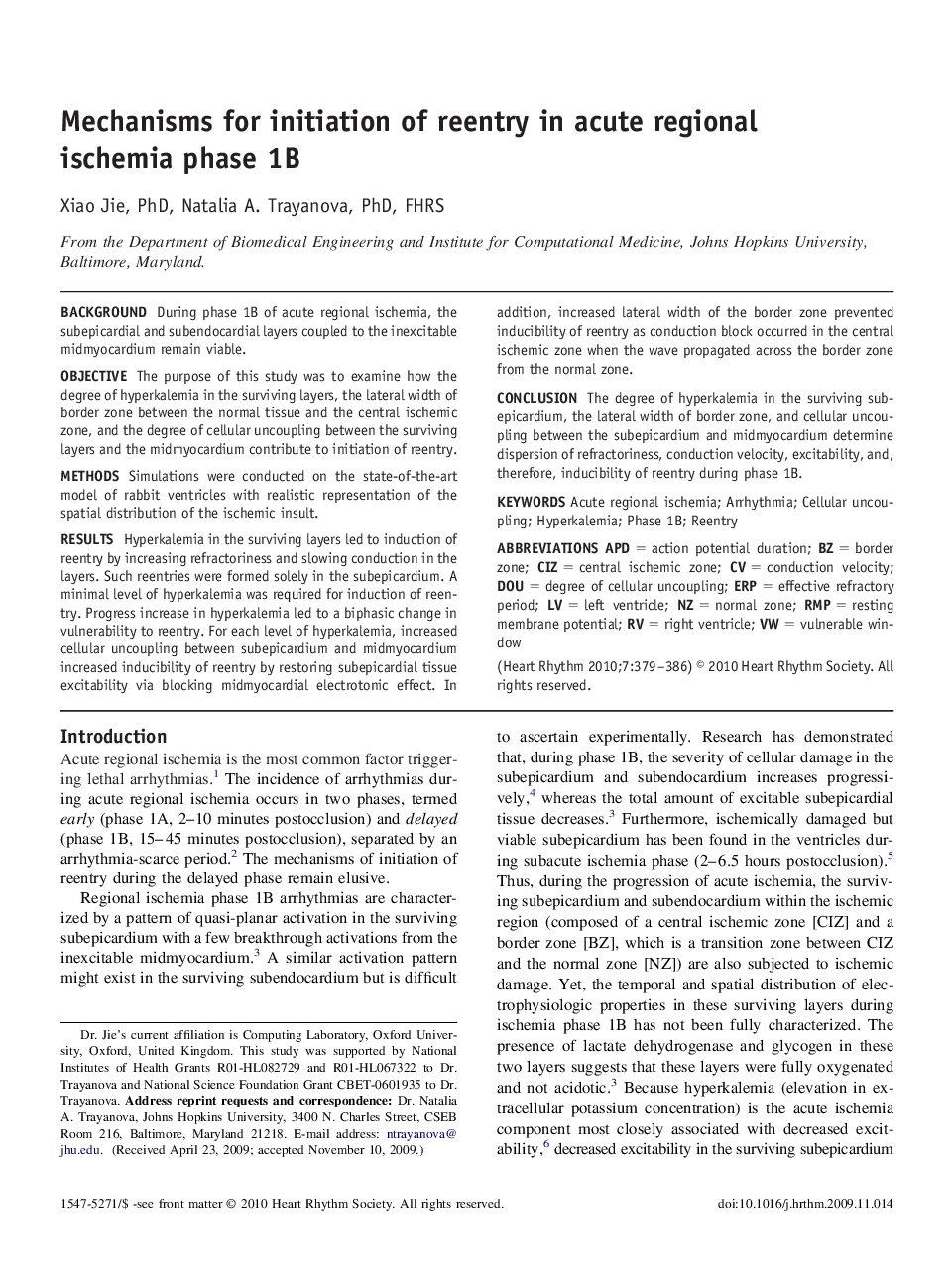| Article ID | Journal | Published Year | Pages | File Type |
|---|---|---|---|---|
| 2923914 | Heart Rhythm | 2010 | 8 Pages |
BackgroundDuring phase 1B of acute regional ischemia, the subepicardial and subendocardial layers coupled to the inexcitable midmyocardium remain viable.ObjectiveThe purpose of this study was to examine how the degree of hyperkalemia in the surviving layers, the lateral width of border zone between the normal tissue and the central ischemic zone, and the degree of cellular uncoupling between the surviving layers and the midmyocardium contribute to initiation of reentry.MethodsSimulations were conducted on the state-of-the-art model of rabbit ventricles with realistic representation of the spatial distribution of the ischemic insult.ResultsHyperkalemia in the surviving layers led to induction of reentry by increasing refractoriness and slowing conduction in the layers. Such reentries were formed solely in the subepicardium. A minimal level of hyperkalemia was required for induction of reentry. Progress increase in hyperkalemia led to a biphasic change in vulnerability to reentry. For each level of hyperkalemia, increased cellular uncoupling between subepicardium and midmyocardium increased inducibility of reentry by restoring subepicardial tissue excitability via blocking midmyocardial electrotonic effect. In addition, increased lateral width of the border zone prevented inducibility of reentry as conduction block occurred in the central ischemic zone when the wave propagated across the border zone from the normal zone.ConclusionThe degree of hyperkalemia in the surviving subepicardium, the lateral width of border zone, and cellular uncoupling between the subepicardium and midmyocardium determine dispersion of refractoriness, conduction velocity, excitability, and, therefore, inducibility of reentry during phase 1B.
